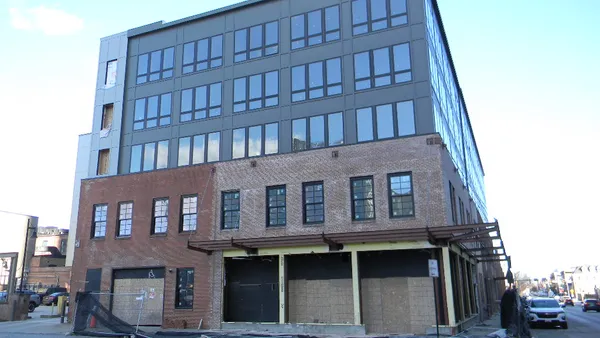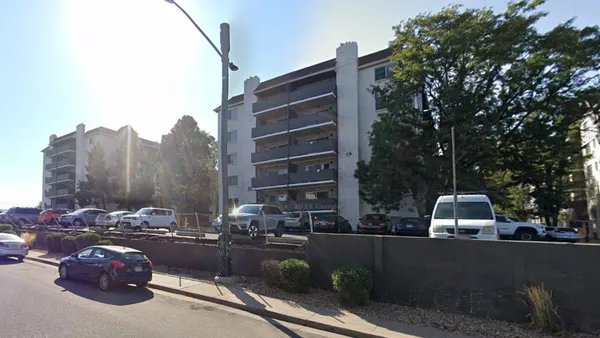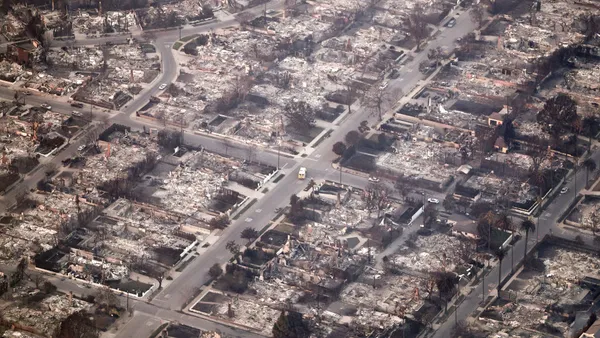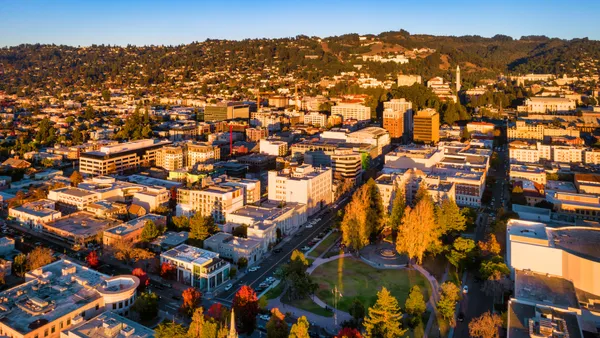Despite media reports to the contrary, Americans are returning to urban living.
“The pandemic fueled a lot of debate around the future of cities,” said Abu Dhabi Investment Authority real estate researcher Elizabeth Szep during a panel at the MSCI Global Real Assets Conference earlier this month. “We all saw the headlines. Cities are dead, New York is over — that was my favorite one by far.”
But much of the flight from cities was driven by COVID-19, and “now that the pandemic dust has somewhat settled, what we’re seeing in trends is pretty clear: Residents actually are returning to cities,” she said. “They’re just not returning to the office.”
Szep presented a chart showing apartment vacancy rates dropping even as office vacancy is rising in San Francisco. She said the Bay Area lost about 5% of its total population in 2020 and 2021 as tech workers transitioned to remote setups in other areas. Vacancy rates in office and residential buildings rose in tandem during that time, but later in 2021, apartment vacancies did an about face.
“We saw vacancies begin to drop for residential properties. And now, according to MSCI data, they’re sitting pretty close in line, if not even a bit below, pre-pandemic levels,” Szep said. “At the same time, we saw office vacancy continue to rise.”
A global trend
San Francisco is part of a global trend of people returning to city life but keeping their flexible work arrangements, Szep said. Work-from-home trends have been “very sticky,” even post-pandemic, and that’s also playing out in New York City and across the world in cities like Sydney and London, she added.
“People are social creatures. We want to be around our friends in the action, and people really like the access to public amenities that cities provide,” she added.
Another factor driving people back to cities could be gas prices. Although fuel costs have been volatile this year, average gasoline prices will hit their highest level ever for the Thanksgiving weekend, according to GasBuddy. The national average is slated to hit $3.68 on Thanksgiving Day, higher than the previous record of $3.44 set in 2012.
When fuel is cheap, people don’t mind driving. But when those prices go up, they seek other transportation options and may even look to move closer to their jobs or public transit. The potential of transportation costs pushing people closer to cities, combined with the relative value of assets in those areas, have some apartment buyers seeking urban assets.
“Rising gas prices always hurt [housing] demand in the outlying areas and vice versa,” said John Burns, CEO of Irvine, California-based John Burns Real Estate Consulting. “It has helped demand when gas prices fall.”
Potential problem spots
This trend could present challenges for landlords in some Sun Belt cities, where “people showed up and rented apartments because they were remote and they were there for the weather, and now they’re heading back to cities,” panelist Craig Thomas, AvalonBay senior vice president for market research, pointed out.
As the rent differentiation between urban areas and secondary markets has narrowed, some renters are questioning whether cities like Nashville and Phoenix can be considered bargains anymore, he added.
But in Texas, Florida and North Carolina, which have attracted higher-quality employers and more highly skilled workers, lower vacancy rates might be a new reality, Thomas predicted.
Others agree that metros in these states, like Dallas, have staying power.
“We have a very diverse employer base, and we’re not dependent on one specific sector like oil and gas or healthcare,” Shakti C’Ganti, founder and CEO of apartment owner and operator Ashland Greene, said of his company’s home base in Dallas. “And, we still have companies that are moving here. Goldman Sachs is going to be moving here. Caterpillar just announced a little while ago that they’re moving here. So, we still have to house all these employees.”












